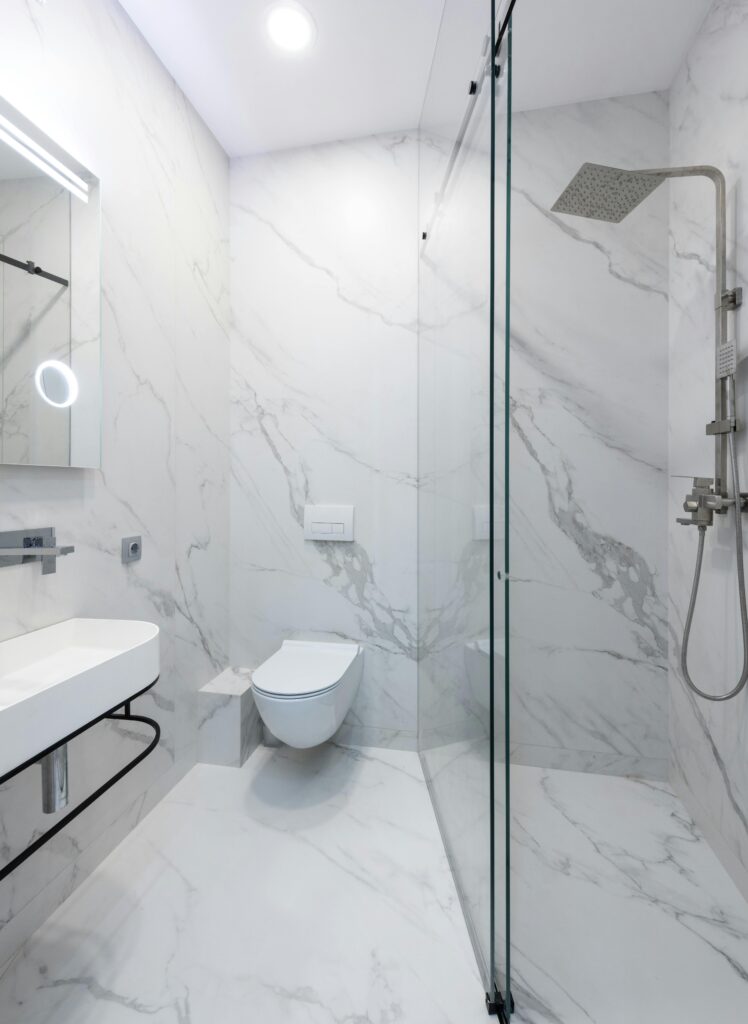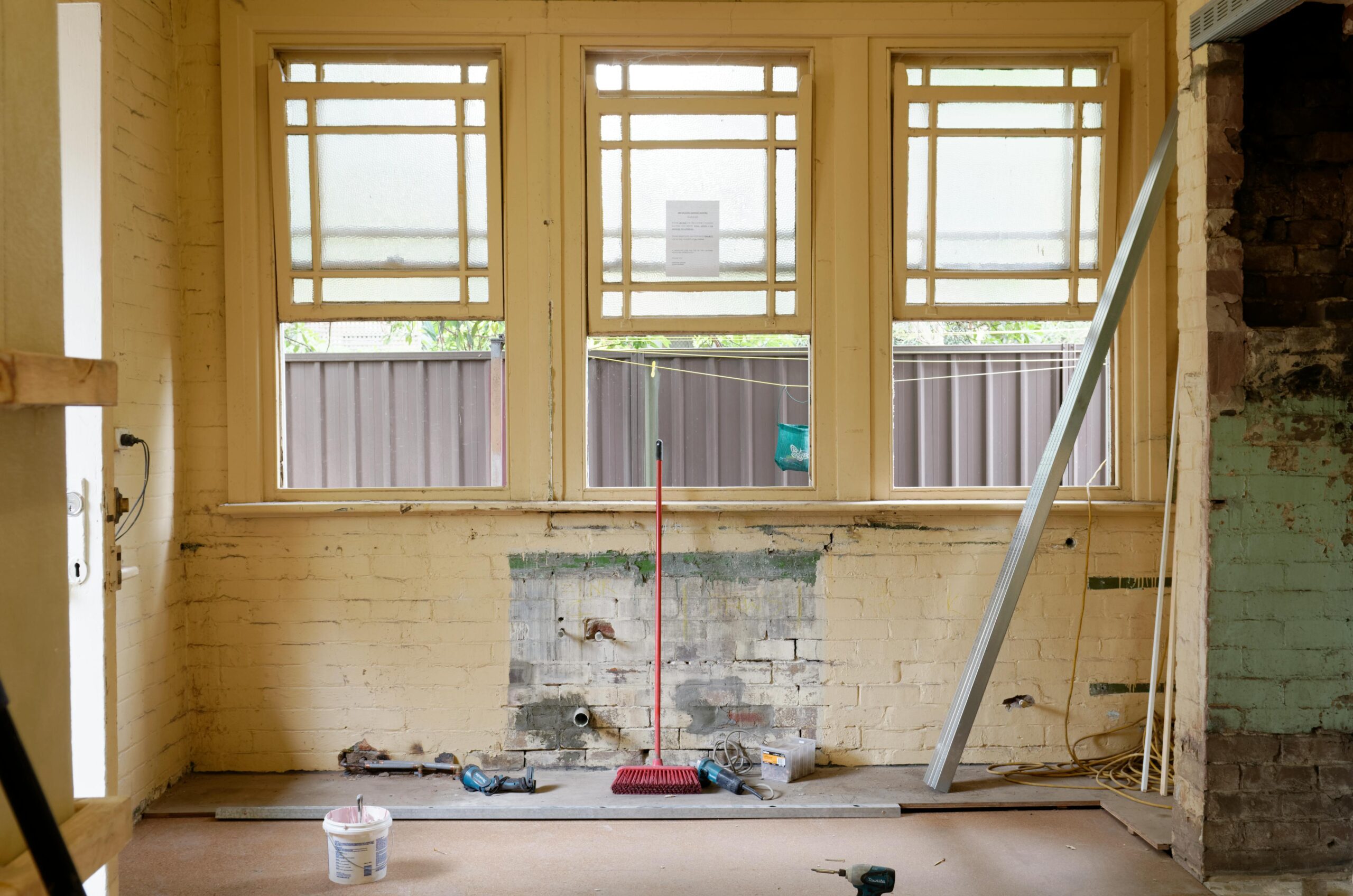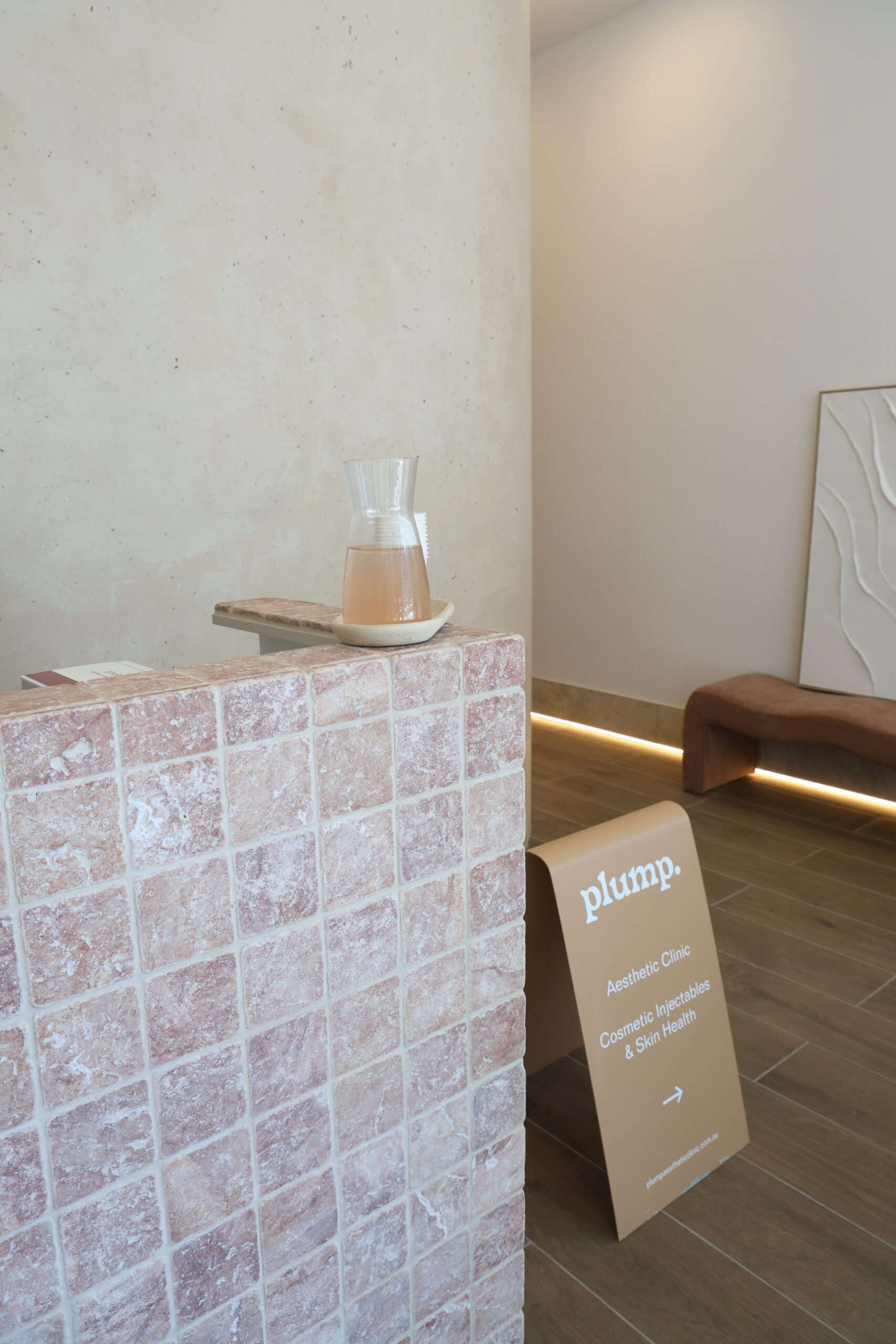Introduction
A commercial fit-out isn’t just about aesthetic appeal or functional layouts—it also requires maintenance and water-tight checkups (pardon the pun!) to ensure your space remains safe, and after spending money on renovating or building you want it to be, long-lasting.
Without thorough measures, hidden leaks and moisture buildup may lead to costly repairs, mould growth, and even structural damage causes by waterproofing issues.
In this blog, we’ll show you how to identify common waterproofing red flags in your bathroom. We’ll also share a few proactive tips to to help you keep you keep your bathroom intact and long-lasting for years to come.
1. Visible Water Stains or Discolouration
Stains on walls, ceilings, or floors often serve as the first warning sign of a waterproofing issue. When your bathroom’s barrier fails, water seeps into surrounding materials, leaving yellowish or brownish marks. In severe cases, the paint may bubble or peel. If you spot these warning signs, act quickly. Delaying repairs can compromise your entire commercial fit-out by allowing water damage to spread.
Action step:
- Inspect tiled walls and grout lines routinely. Pay attention to any discolouration or bubbling that suggest there could be moisture problems.
- Schedule a professional waterproofing assessment if you suspect hidden leaks.

2. Musty Odors and Mold Growth
Damp, musty smells are a telltale sign of trapped moisture—another serious consequence of waterproofing issues. Mould flourishes in these conditions, often behind walls or beneath floors where water can collect undetected. It spreads rapidly, threatening not only the structural integrity of the space but also the well-being of its occupants, making it an issue that demands prompt attention.
Action step:
- Look for black or greenish patches on grout lines, wall corners, and hidden areas behind bathroom fixtures.
- Consider external references like Moldpedia for in-depth mold identification and prevention strategies.
3. Cracked or Loose Tiles
Tiling contributes significantly to this, but even the best installations can fail if waterproofing is compromised. When water seeps beneath tiles, adhesives weaken, and tiles may shift or crack. Pay special attention to bathroom corners, shower floors, and areas around sinks or tubs.
Action step:
- Replace damaged tiles immediately and re-grout compromised areas to prevent water infiltration.
- Investigate whether subfloor screeding and membranes need an update to maintain a watertight seal.

4. Swollen or Warped Flooring
Flooring materials swell or warp when they absorb excess moisture. You might notice spongy or uneven surfaces, especially in high-traffic bathroom zones. Since commercial bathrooms endure constant use, investing in robust waterproofing solutions protects your business from downtime and costly overhauls.
Action step:
- Conduct routine floor inspections. If you detect uneven surfaces, contact a professional to evaluate the subfloor and waterproof membrane.
- Install durable, water-resistant flooring as part of your overall commercial fit-out plan.
5. Peeling Paint and Wallpaper
Peeling paint or lifting wallpaper around bathrooms reveals an environment that’s too moist. Excess humidity can cause decorative finishes to degrade, especially when the underlying waterproofing has failed. Although minor peeling might seem cosmetic, it often signals deeper issues behind the walls.
Action step:
- Address the root cause by verifying the waterproof membrane’s integrity before simply repainting or re-papering.
- Ventilate your bathroom properly to reduce humidity and help preserve walls and finishes.
Our expert tips to help with the maintenance of your fit-out:
- Regular Maintenance Checks:
Schedule routine inspections to catch leaks, cracks, or signs of dampness early. Early detection prevents minor issues from escalating.
- Use Quality Materials:
Invest in premium waterproof membranes, sealants, and tiles. High-quality products reduce the risk of premature failure.
- Ensure Proper Ventilation:
Install exhaust fans and maintain adequate airflow to combat humidity.
- Consult Experts:
Partner with professionals who specialise in fit-outs and waterproofing. Experienced teams can pinpoint vulnerabilities and recommend tailored solutions.
Explore our waterproofing services, and view our previous projects – Reno Space Projects
Conclusion
Waterproofing issues can undermine the success of your commercial fit-out, leading to costly repairs and safety concerns. By recognising warning signs—like water stains, mould growth, cracked tiles, warped floors, or peeling finishes, you can act quickly to resolve problems before they spread.
Keep your project on track by maintaining a consistent inspection schedule, investing in quality waterproofing materials, and working with a professional fit-out contractor.
Reno Space are recognised by the Australian Institute of waterproofing the governing body within Australia.
Ready to renovate, have a project in mind, or suffering from a leak in your bathroom?
Call us at 1300 002 311 or email: estimating@reno-space.com. Our team guidance and offer a free quote to give you an understanding of the investment involved. If you need help creating a new space from the ground up, we’ll walk you through each step to ensure a durable, leakproof result.


